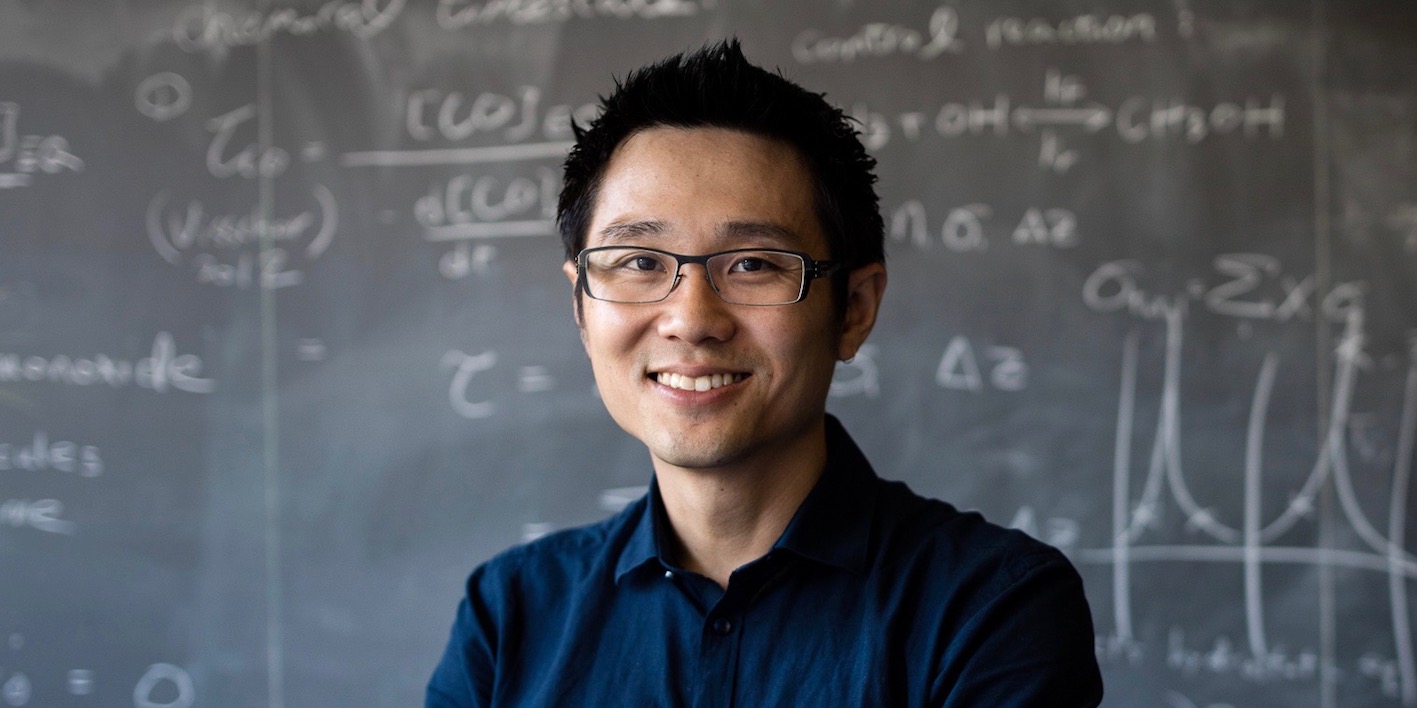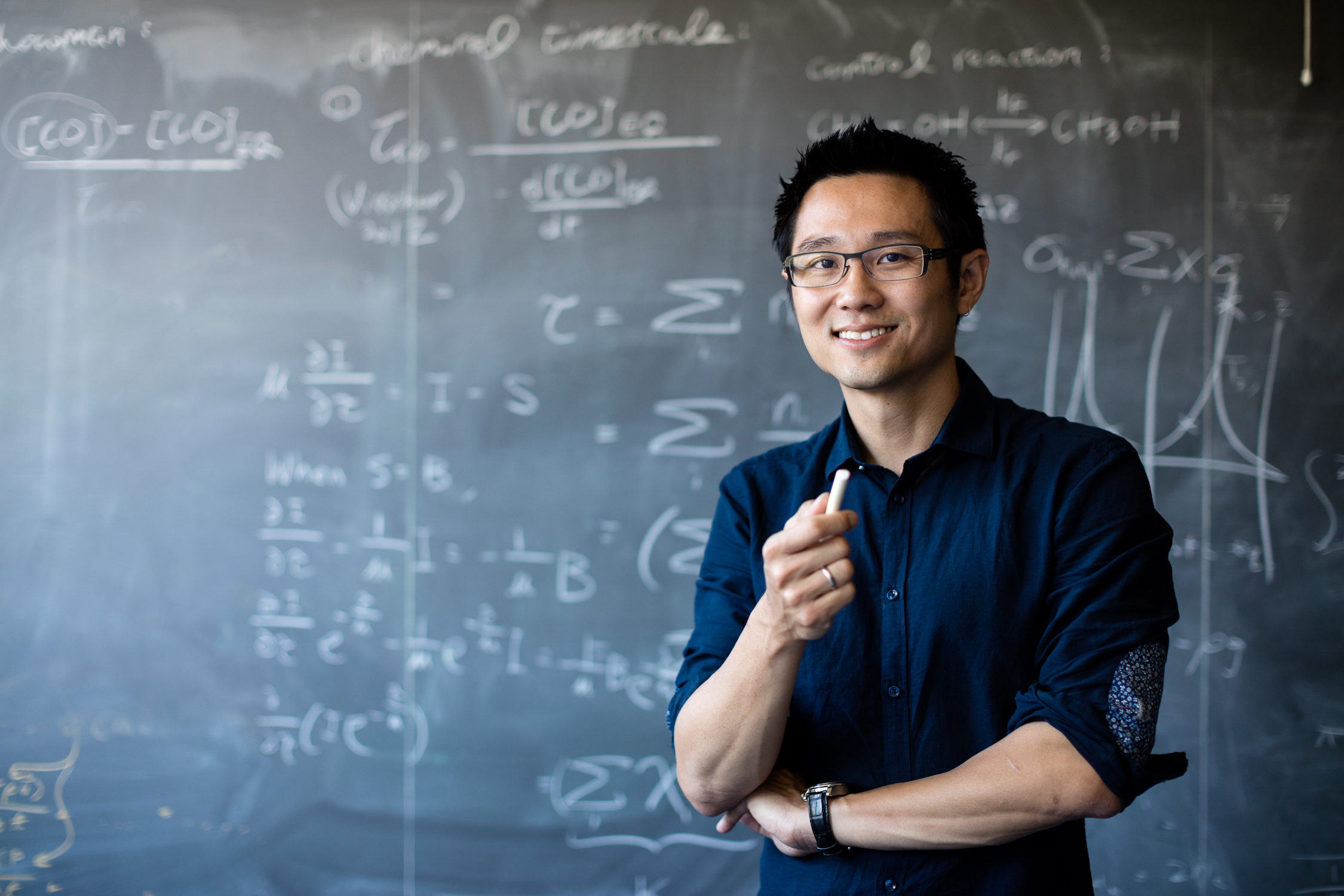“Writing is very close to my heart”

With two prestigious awards, conferred at the end of 2017, Kevin Heng started an exciting year. The professor at the Center for Space and Habitability (CSH) of the University of Bern and member of the NCCR PlanetS received a grant by the European Research Council (ERC) and a writing prize by the American Astronomical Society (AAS).
PlanetS: What are you going to do with the ERC Consolidator Grant?
Kevin Heng: The grant gives me two million euros over 5 years. I will hire three senior postdocs with very specific skill sets: an atmospheric scientist, a geochemist and an astrobiologist. Each postdoc will get four years of funding and very generous support. So, I hope to attract the best talent to Bern to work on a project named EXOKLEIN.
What is EXOKLEIN?
It is the study of small planets around small stars, therefore “klein”, the German word for small. You probably have heard of TRAPPIST-1 and the excitement about Earth-sized planets around red stars. People are building telescopes to find these things and once we find them, the next natural question is: Are they anything like Earth, are they habitable? It’s not so obvious, because they don’t look anything like the solar system. Red stars are not only smaller and cooler, but also more active in the ultraviolet, and the list goes on. The EXOKLEIN project tries to anticipate developments several years in the future by laying down the theoretical understanding for what is going on observationally.

Kevin Heng, Professor at the Center for Space and Habitability (CSH) and member of PlanetS. (Photo Alessandro Della Bella)
What are the questions you would like to answer?
For example, on Earth carbon dioxide is a very important greenhouse gas. It’s the reason why we are not frozen. The carbon dioxide on Earth is controlled by something called the carbon cycle. How does the carbon cycle work on these small planets around red stars? That is one of the questions we would like to answer. What happens if the planet is a little bit different, if the atmosphere, the interior, the plate tectonics, the gases are a little bit different from Earth? If I change all these little things according to the laws of physics, how does it for instance affect the ability to make the planet have liquid water? The philosophy is not just understanding one piece of the puzzle, but the whole system.
When you were applying for the ERC grant, were you sure to succeed?
I was not convinced at all that this is a 100 percent sure shot, but I was convinced that I had a fighting chance. I thought I had a fifty-fifty chance and that if I wrote the proposal in the right way, with the right tone, by asking the right questions, and then if I had the right panel of people judging and if I gave the right talk, then I would have a good chance. All those things came together this year. The review process was very intensive. In addition to giving a talk in front of a panel of 15 professors from all over the world, there were six anonymous referee reports. To my great surprise, all six were positive and my favourite comment from one of the referees was: “Even if he is wrong about this, it is still interesting.” That means even if the outcome is wrong, he or she accepts my thinking about the problem.
You not only received the ERC Consolidator Grant but also the “Chambliss Astronomical Writing Award” for your graduate textbook about exoplanetary atmospherese. What does this AAS award mean to you?
It means the world to me. It is not the money – only 1000 dollars – but the fact that it is almost the highest form of recognition by my peers. It is doubly meaningful to me because I started out my early life as a writer. When I was a kid, I devoured books. I read one every two days, and in school English and writing was the only subject that came to me with no preparation, no studying. So, I always knew I was a writer.
Did you earn money with writing?
When I was 13, I wrote little things for newsletters. Sometimes, they gave me a pen in return to make me feel better. The first writing job I was paid for was as a radio journalist at the national English speaking radio station “Power 98FM” in Singapore. So, I was a radio journalist and producer and eventually (and unofficially) the backup sound engineer. Later, I was the foreign correspondent for a sports portal based in Hong Kong, writing between 5 and 10 articles every week. After that I graduated from university and I had to make a choice. Either I became a writer who did science for fun or I did science professionally and wrote as a hobby. So, I decided that I would try the second and if things didn’t work out then I would do the first.
Now you are doing both science and writing.
On the advice of my supervisors I put aside the writing for a few years. Then I became inspired to try to write for a real magazine and got a chance with the “American Scientist”. My first essay on exoplanetary atmospheres was published in 2012. Ever since then I have written for the American Scientist as a columnist. That is a job that I treasure very much because writing is very close to my heart.
Kevin Heng: Exoplanetary Atmospheres – Theoretical Concepts and Foundations, January 2017, Princeton University Press. ISBN: 9780691166988
http://nccr-planets.ch/blog/2017/03/22/exoplanetary-atmospheres/
Categories: Internal Newsletter, News
